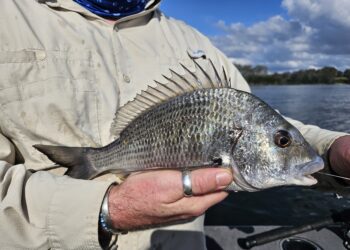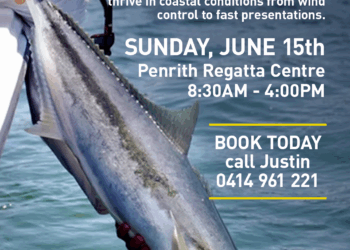TWISTS and tangles are an exceptionally frustrating occurrence when fishing and one of the most frustrating of these is a wind knot. Wind knots are synonymous with spin tackle and braided line and with this combo being the most popular amongst anglers, almost every fisher at some stage will experience that dreaded tangled wind knot annoyance when casting. Wind knots should really be called casting knots as they are formed by inconsistency in line speed coming off the reel whilst casting. This can be because of a loose loop on the spool, a knot getting caught in the guides, or the line speed otherwise abruptly changing during a cast. It is not all doom and gloom however and you can easily minimise the dreaded wind knot by considering a few key factors.
Loose loops
A key cause of wind knots is due to line being on the reel being retrieved with intermittent loss of tension resulting in a loose coil forming on the spool. These loose coils can either harmlessly glide off the reel when casting or entangled the line flying off the spool. Minimising loose loops requires some conscious effort which eventually becomes second nature. After casting you’ll generally click over the bail arm and start to wind and at this point you might start winding over slack line that will form a loose loop, so it pays to pull on the line before winding to take any slack out of the system. When winding in light lures or if the bait or lure skips over the surface is another opportune time for loose loops to form. Applying pressure to the line with your free index finger is a simple way of drastically reducing loose coils forming, especially in light line.
Line lay and spooling up
Having too much line on the spool is another major contributor to wind knots. Over filling the reel results in excess line that doesn’t sit neatly within the confines of the spool and can easily slip and loosen resulting in loose loops leading to wind knots. Similarly, uneven line lay will lead to the line being wound onto the reel with uneven tension as it traverses peaks and troughs, increasing the likelihood of wind knots. When spooling up for the first time you should always apply a reasonable amount of pressure to the line to pack it on tightly.

Casting into the wind
As the name suggests, one of the primary culprits for wind knots is the wind and in particular, casting into the wind. When you initially cast, the line speed coming off the reel and off the rod tip are similar. As the cast progresses the line speed will slow due to the forces exerted on the line and weight however this is a gradual deceleration and so the line speed coming off the rod tip and off the spool slow down uniformly. When you cast into the wind however, the wind will dramatically low the slow down the line speed coming off the rod tip and with line coming off the reel faster with no where to go, an inevitable tangle occurs.
Light lure challenges
Like casting into the wind, casting with ultralight lures or relatively heavy braid and relatively light lures will often result in the lure decelerating quickly once cast as the light weight reduces the amount of force that can be exerted to pull the line through the air. As a result, the line at the rod tip will slow down much quicker than the line coming off the spool resulting in a tangled mess.
Coatings and line stiffness
Lighter braided lines, especially those that are true braid are often quite supple and limp with this lack of body or memory leading to a greater chance of wind knots. A thermally fused super line is generally stiffer than a comparable braid with this increased line memory resulting in fewer tangles as the line comes off the reel in a more predictable fashion so is less prone to tangling. Lines that feature additional coatings will not only be stiffer but will also be more water resistant which further helps reduce wind knots as waterlogged braid can become heavy and further exacerbate differences in line speed between the rod tip and spool.
Tangle free guides
The guides on your fishing rod can help with tangle free casting as the diameter and shape guide can impact casting performance including the ability of the line disentangle. Guide frames that sit closer to the blank are less prone to tangles, especially with casting in any wind. Traditional Y shaped guides sit proud of the blank and are more likely to catch any loose loops than K-guides and similar variants which are angled towards the blank. K-guides also feature frame supports that are designed to allow loose loops to readily glide over, further reducing the chances of knots when casting. Casting leader knots Long leaders can be problematic and if a leader knot is passing through multiple guides, the line will slow down each time it hits the guide resulting in the line coming off the spool faster than it can be cleared and an increased chance of a casting knot forming. If you can not avoid the leader knot passing through the guides, make sure you use the slimmest knot possible and trim the tag ends as close to the knot as possible. It also helps to point the rod tip to follow the trajectory of the cast to further assist the line to come off the spool with the least possible resistance.


















